Between Palms THE



Production

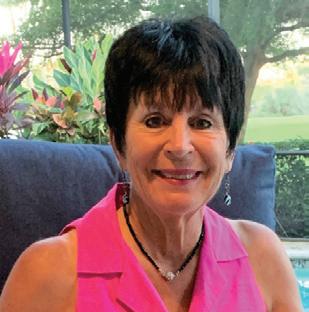




Production


JANE BREISCH, EDITOR CVGOLFERS@GMAIL.COM
Pharrell Williams wrote and recorded a beautiful song back in 2014 called Happy. It was the bestselling song that year, and was produced for the soundtrack of Despicable Me 2. It has a great catchy tune, and begins with the following lyrics:
It might seem crazy what I’m ’bout to say Sunshine, she’s here, you can take a break I’m a hot air balloon that could go to space With the air, like I don’t care, baby, by the way, huh [Chorus]
(Because I’m happy) Clap along if you feel like a room without a roof
(Because I’m happy) Clap along if you feel like happiness is the truth
(Because I’m happy) Clap along if you know what happiness is to you
(Because I’m happy) Clap along if you feel like that’s what you wanna do
The earliest known use of the word happy is in the Middle English period (1150–1500). The Oxford English Dictionary lists 16 meanings for happy, including “feeling pleasure and enjoyment because of your life, situation, etc.” I only mention all of this because I’ve captured some wonderful
thoughts on how to be happy. Please see my article The Best Advice for How to Be Happy on page 14.
In the July BTP, I wrote an article titled Unforgettable Moments in Baseball History (See: https://btp.seabreezecommunications. com/2025/06/12/unforgettable-momentsin-baseball-history/). An avid BTP reader, Denny Hilgers, forwarded another baseball moment for the record books. Johnny Vander Meer is famous for being the only pitcher in Major League Baseball history to throw two consecutive no-hitters, achieving this remarkable feat on June 11 and June 15, 1938, while playing for the Cincinnati Reds. His accomplishment is considered one of the most unbreakable records in baseball.
Okay all you former hippies and Beatles fans from the 1960’s. Remember when? Check out Life in 1960’s America, By the Numbers on page 36 to relive memories from that decade.
It bears repeating: please know there’s an option for you to download this issue (or any prior issue) of BTP as a PDF (Adobe) for viewing, rather than using a web browser. When BTP is first opened, scroll down to the bottom of page 1. When there, simply
click the downward arrow icon (see sample #3 below) to download the magazine as a PDF on your laptop, iPad, or cell phone.
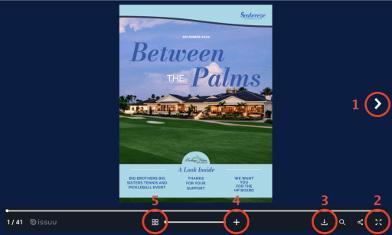
The PDF version shows one page at a time (vs. the two pages you see side by side “on line”). Plus, if you download the issue, you can print any page you like, and also store any current or prior issue on your laptop. It’s easypeasy! ***********
Should you have an article to submit for the September issue, my deadline is August 3. Post Cards are always welcome! Please email to cvgolfers@gmail.com.

ARTICLE AND PHOTOS BY JANE BREISCH, EDITOR
Rain, rain … go away. And it did for most of our Independence Day tournament, other than some sprinkles here and there throughout the round. However, the Royal course was very wet having received 1.5” of rain in the past 24 hours. Despite the conditions, the tournament drew a field of 124 enthusiastic players who competed in four flights. 1st, 2nd, 3rd, and 4th places earned $100, $80, $70, and $50 respectively per team in Pro Shop credit. Teams also competed for skins in each flight, with $100 available per flight. A total of 17 skins were won. Festive outfits of red, white and blue – as well as many stars and stripes – were seen everywhere on the course, and the flag pins sported patriotic flags.
The first-place winners per flight were:
•Flight 1: BJ Hurst, Bobby Roberts, Porter Roberts, and Dave Ginter.

JEANIE ANDREW-BRENNAN SANG A BEAUTIFUL RENDITION OF THE STARSPANGLED BANNER TO CELEBRATE JULY 4TH.
•Flight 2: Kaye & Rich Barrick, Sharon Hulick, and Duke Murphy.
•Flight 3: Shawna & Bob Fay, and Lisa & Tony Gordon.
•Flight 4: Cathy O’Shia, Allyn Leake, and Norene & Brian McFadden
Following golf, players gathered in the Palms Dining Room to enjoy a delicious buffet.

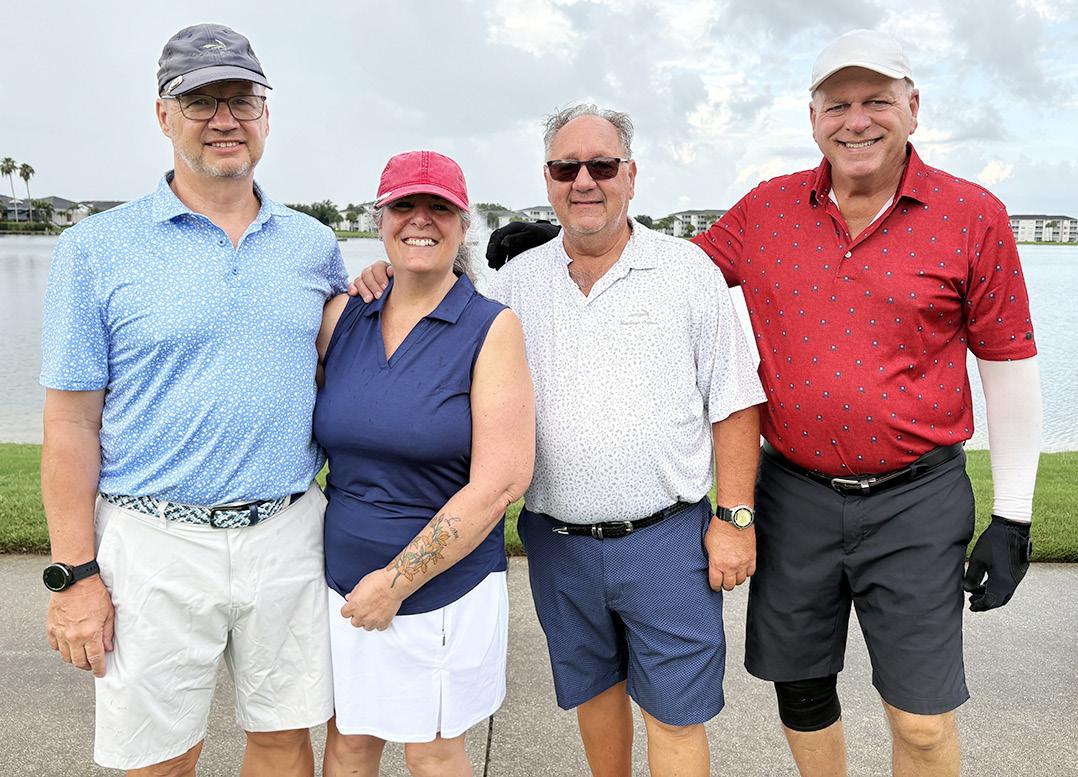






L-R: GLEN & PAULA HYRE, AND SHELLY & JEFF PAUL.

L-R: MARCIA LEADBETTER, TIM JOHNSON, BARB BARLOW, AND KATHY

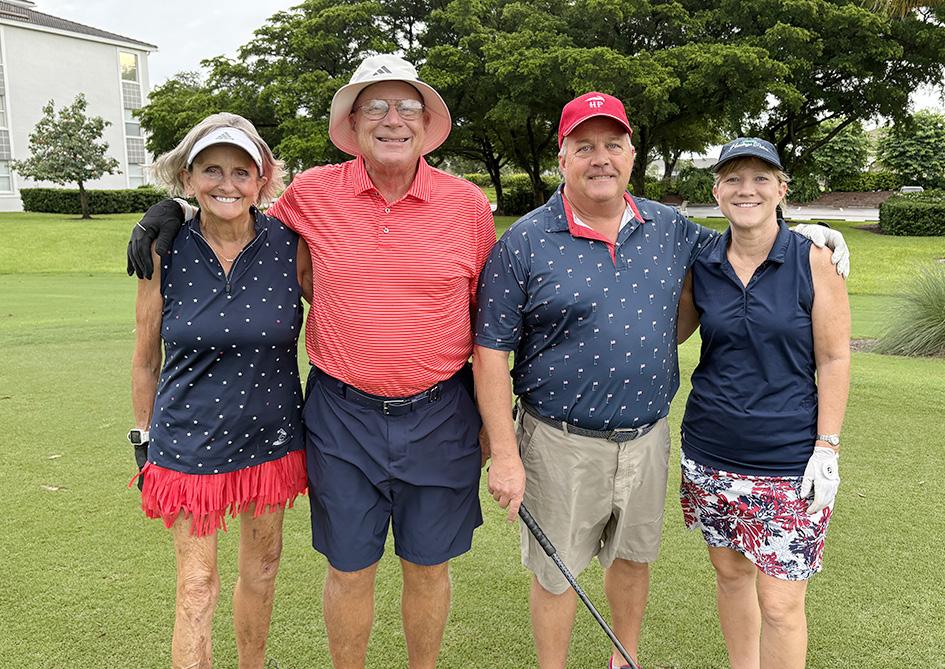
L-R: SHIRLEE & RICH FIREBAUGH, AND JEFF & LESLEY WILLIAMS.


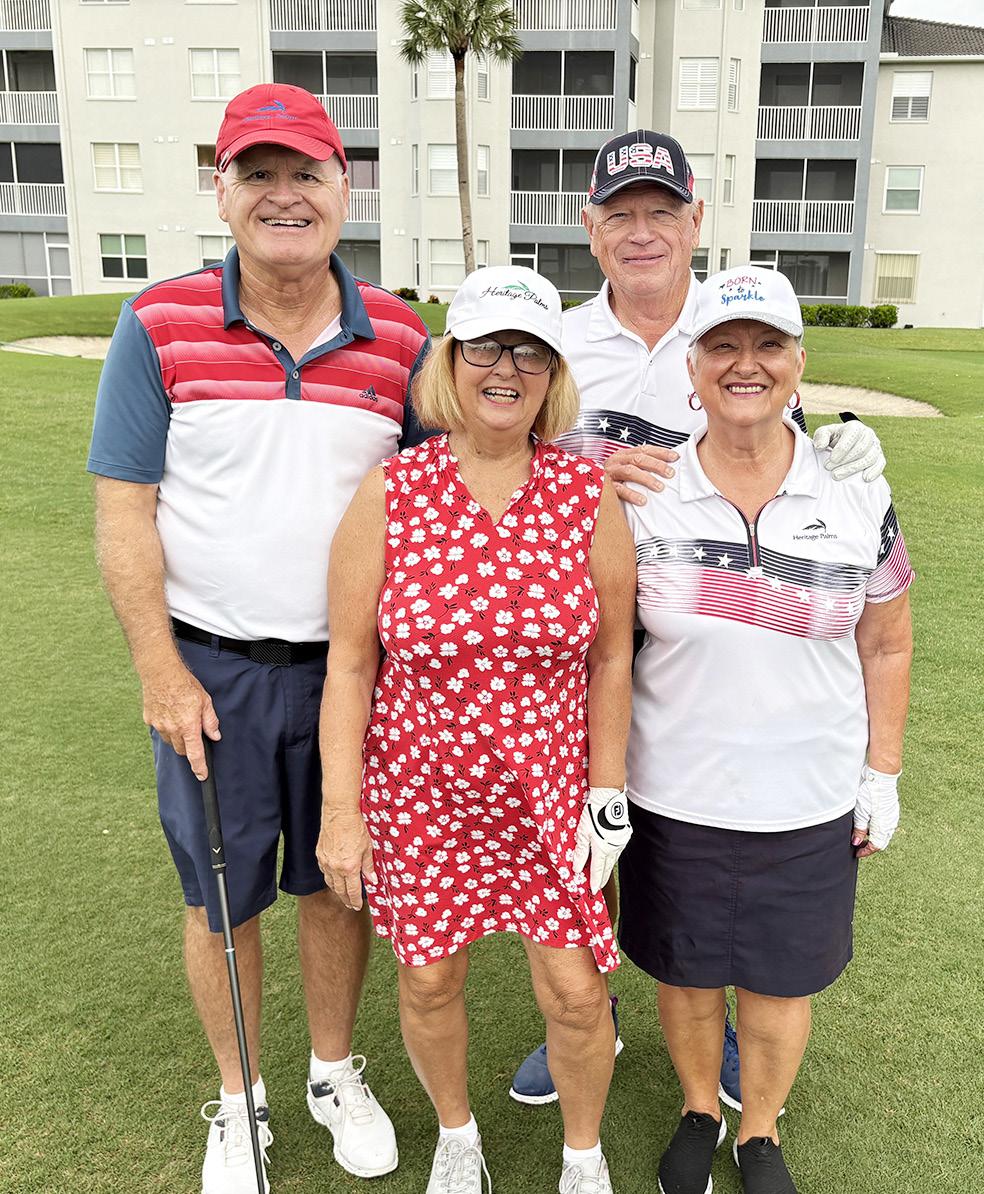
AND GEORGE & MELODY SMOTHERS.


FOR MORE PHOTOS SEE PAGE 44 OR CLICK HERE
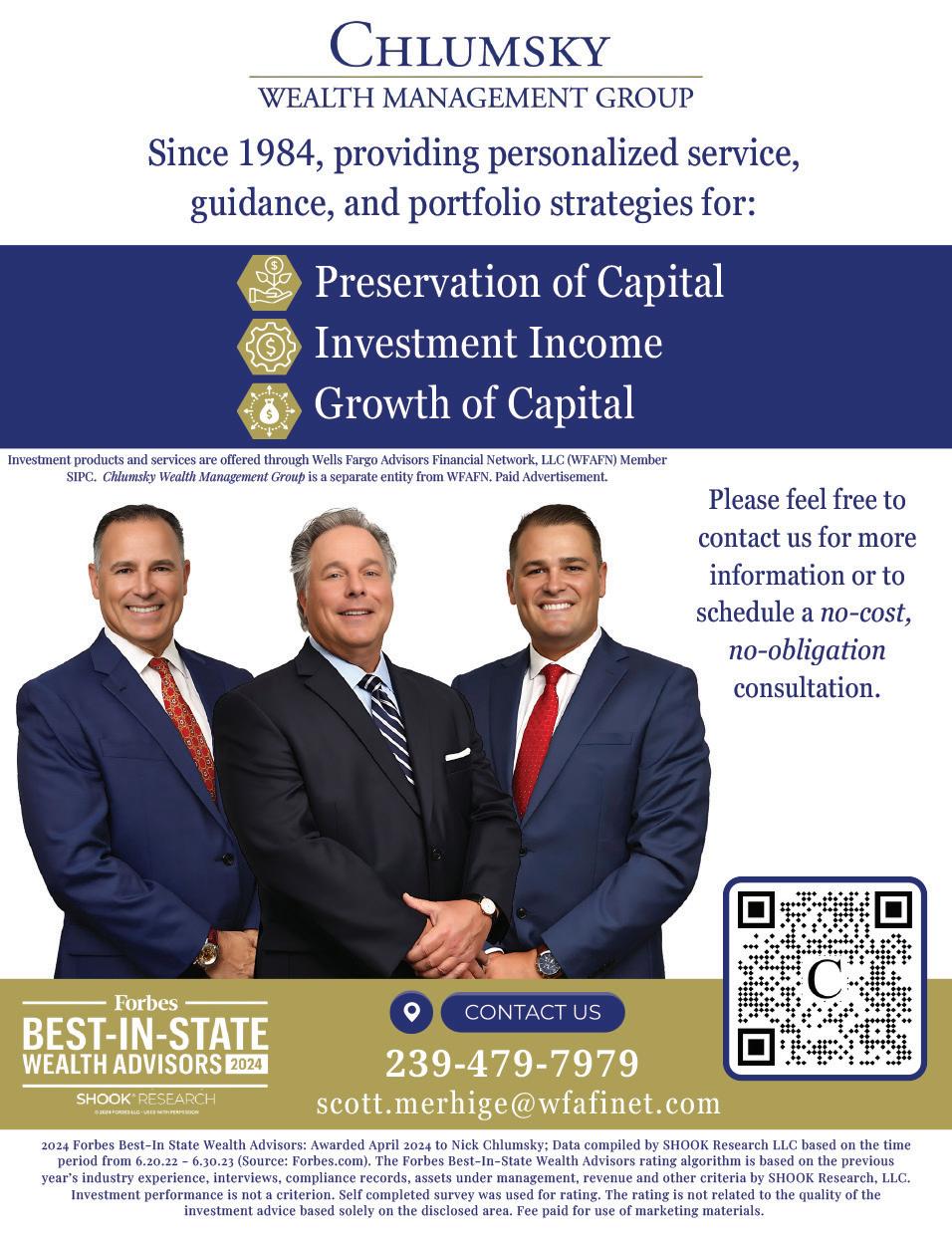
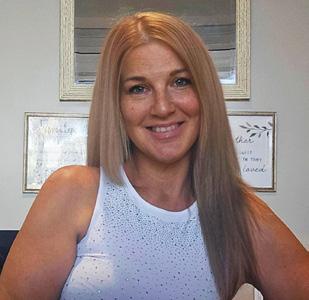
LISA SCHNECK, CPT, CNC, TPI-2 WELLNESS AND ACTIVITIES DIRECTOR LSCHNECK@HPGCC.COM
“I’ll sleep when I’m dead” is something of a slogan among highly productive people. Yet, research is clear that anything short of the recommended seven to nine hours of sleep will yield poor health outcomes. Science demonstrates that adequate sleep is one of the most vital things we can do for our body, while skipping out on valuable sleep can quickly impact our health markers. Lack of adequate sleep is associated with premature


death, dementia, and a host of other health concerns.
You may remember in last month’s issue of Between the Palms , we briefly touched on the Five Super Powers of Wellness: nutrition, movement, mindset, connection, and sleep. There is a good reason why sleep and rest are counted as one of these superpowers.
When we sleep, our body goes through a specific sequence of four types of sleep: periods of very light sleep (even waking), REM (rapid eye movement) sleep, light sleep, and deep sleep, all occurring throughout the night in roughly 90-minute cycles. When we first drift off to sleep, we will spend more time in light and deep sleep. It is in these states of light and deep sleep that our

physical body is restored – growth hormone and testosterone are released, toxins are removed, and memory is consolidated. Essentially, we are physically restored more so earlier in our nightly sleep routine.
However, this assumes that we are going to bed at our standard time and according to our natural circadian rhythm. If we get to bed much later, we will naturally move through this physically restorative period more quickly and spend most of our sleep with significantly more REM sleep, which helps restore our mental and emotional state.
During the later stages of sleep, particularly REM sleep, the brain undergoes essential processes that contribute to emotional wellbeing and cognitive function. Sleep Expert Dr. Matt Walker (bio on the next page)

highlights that REM sleep acts as a form of “overnight therapy,” where emotional memories are reprocessed without the influence of noradrenaline, a molecule tied to anxiety. This unique condition allows for the emotional impact of past experiences to lessen, facilitating recovery from stress. Moreover, REM sleep fosters creativity and problem-solving by forming new connections between existing memories and information. The reduced activity in the prefrontal cortex during this stage encourages open thought and flexibility, enabling the brain to uncover insights. Additionally, while deep non-REM sleep helps reinforce individual memories, REM sleep further enhances memory consolidation by integrating new information with what we already know.
Thus, a whole night’s sleep is imperative for optimal health and performance, as going to bed later will miss our physical restoration period, and waking earlier will prevent our necessary mental and emotional restoration.
“The early bird gets the worm” is another often-repeated slogan that causes most of the population to feel great pride and accomplishment following their early morning wake-up while causing others to feel guilty or attempt to change their natural biological clock.
Dr. Walker explains that there are five different chronotypes for sleep, and unlike circadian rhythm, these chronotypes are genetic and cannot be altered. Understanding our chronotype is crucial for meeting our sleep and rest needs and living the highest quality of life possible.
If you would like to know your chronotype and what it means, you can follow this link to a sleep chronotype quiz or MEQ and more detailed information about how to best make use of this information can be found here.
If you want to learn more about the importance of sleep and rest, follow this link to a concise video from Dr. Walker.
It easier than ever to track our personal sleep habits through wearable devices – iPhone, Android, Quora Ring, etc. which are linked to applications on our phones. If you are unsure how to access or use your wearable device, or which device would be best for you, please reach out to me and we can look at your options together. If you are having difficulty falling asleep or remaining asleep, I would welcome a chat with you one-on-one to go over available resources and information to maximize your physical and mental restoration.
Dr. Matthew Walker is a highly qualified sleep expert with a background in neuroscience and psychology. He holds a Ph.D. in neurophysiology from the Medical Research Council in London, and is currently a professor of neuroscience and psychology at the Univ. of CA, Berkeley. He is also the founder and director of the Center for Human Sleep Science at the Univ. of CA, Berkeley.


















Spread “positive gossip.”
CONTRIBUTED BY N.Y. TIMES READERS
We tend to highlight the negative when we gossip about others, said Jamil Zaki, the author of “Hope for Cynics” and the director of the Stanford Social Neuroscience Lab.
Instead, he said, do the opposite: Spread positive tidbits about someone. Maybe it’s a little-known but admirable fact about that person, he said, or a kind act you catch them in. And research suggests that spreading “positive gossip” may encourage others to do it too.
Hang out with younger people.
Margareta Magnusson, the nonagenarian author of “The Swedish Art of Aging Exuberantly,” offered a simple definition of happiness: being around young people.
Not only do they supply fresh perspectives, she said, but hearing about their plans and ideas “is a way to stay in tune with the young person you yourself were at some point.”
Magnusson suggested the following for older people: Just ask questions. Listen. Offer food. And don’t talk about your bad knee again, she said.
Do a “mini version” of your favorite vacation activity.
To prolong the happiness you felt on vacation, list what you loved most about the trip, said Sarah Pressman, a professor of psychological science at the University of California, Irvine. Say, daily naps, reading novels, or family dinners.
Then “try to find a mini version of that,” Pressman said. If you loved biking on vacation, she said, start with a weekly bike ride. If you loved exploring, meet a friend in a new town and wander like a tourist.
everyday.
Suzanne B. O’Brien, a former hospice nurse, told me that many dying patients look back with longing on the more ordinary parts of their routines, like making pancakes on a Saturday morning.
An easy way to remind yourself to be grateful for those everyday moments, O’Brien added, is by shifting your perspective: “Instead of telling myself, ‘I have to go to the gym,’ I’ll say, ‘I get to go to the gym.’”
Savor life like an astronaut. Mike Massimino, the author of “Moonshot: A NASA Astronaut’s Guide to Achieving the Impossible,” used to complain about the weather. Then he went to space.
“In space, there is no weather,” he told me. “No atmosphere. No seasons. Nothing.”
Now he takes time to savor what’s around him, bringing mindful attention to positive things in life. Even on the wettest, muggiest days, Massimino enjoys feeling the rain on his face. “It’s a reminder that the planet is alive,” he said, “and how lucky I am to be on this planet.”
Listen to Cher.
During an interview, Cher was asked for the best advice she ever received. She said, “If it doesn’t matter in five years, it doesn’t matter.”
Cher’s maxim helps to sort out quickly whether an issue should be bothering someone or not. Often the answer is that it actually doesn’t matter. Immediately, one’s heart is lighter.
Start a weird ritual.
Small rituals can add levity and meaning to daily life, said Michael Norton, a behavioral scientist and the author of “The Ritual Effect.”
You can create one around almost anything, he said.
His family does something they call “Happy Meatloaf to You.” It started when he had trouble getting his daughter to eat meatloaf.
“Meatloaf isn’t usually a very exciting dish,” he said, so his family puts candles on it and sings “Happy Meatloaf to You,” to the tune of “Happy Birthday to You.”

From Tom Lonergan: Pat and I visited Magee Marsh, Ohio on the south side of Lake Erie to photograph the warbler bird migration. It’s an annual event in May each year called the “Biggest Week in American Birding.” We had a blast!




From Martha Simmons: My son and his family joined my husband, Ben, and me in Nebraska to celebrate my husband’s Master of Arts graduation in Critical and Creative Thinking from the University of Nebraska at Omaha.



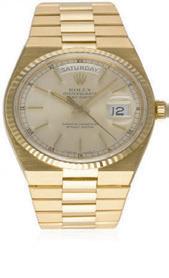






From Sue Sauro: Summer getaway to the western N. C. mountains…Boone, Grandfather Mountain, and Blowing Rock.
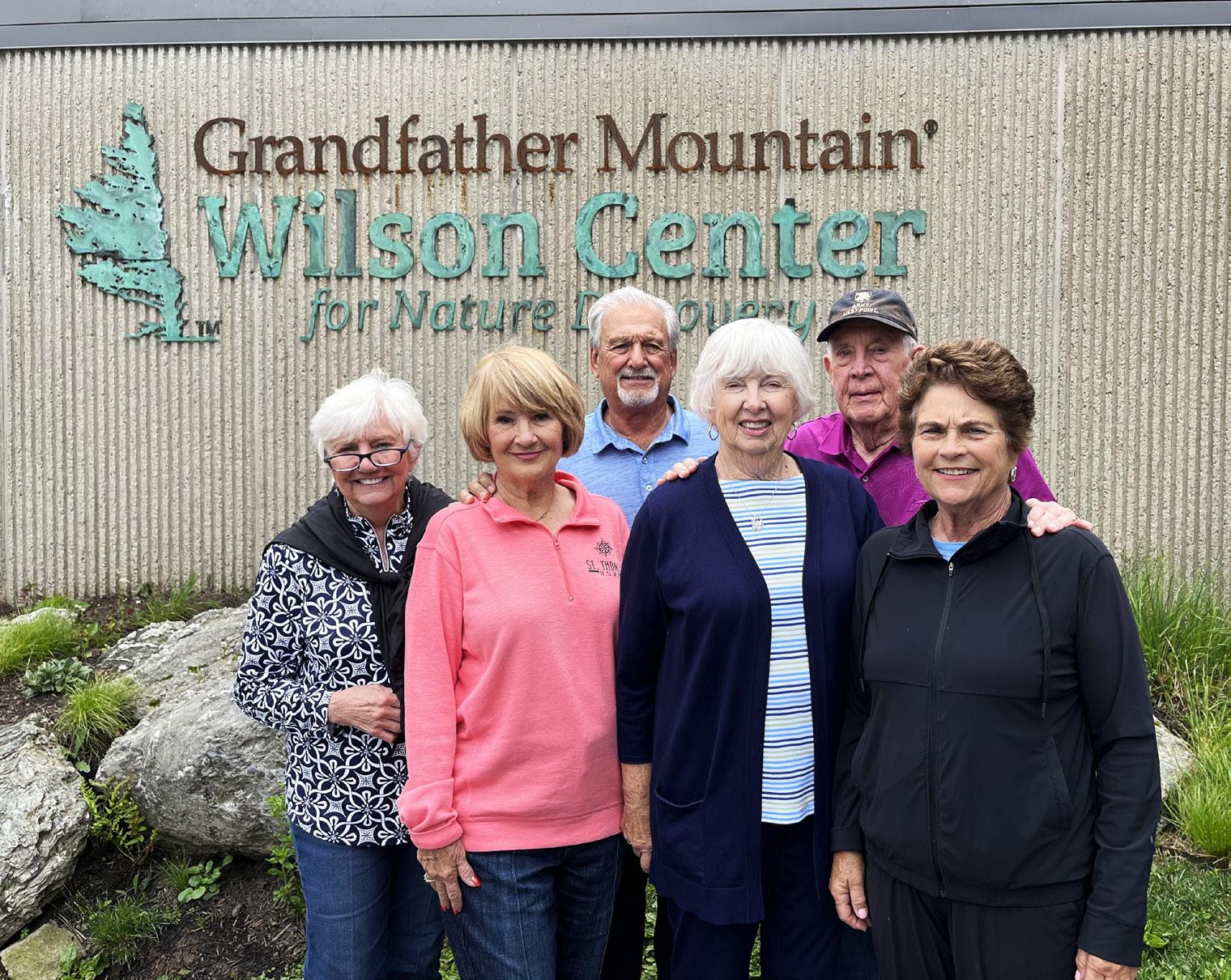

From Kathy Haan Hall: My husband, Steve, and I are in Denver Colorado visiting our new grandson, Brooks Hunter Haan. He was born on May 22 to parents Matt and Courtney Haan. We are all over the moon with the birth of this blessing.
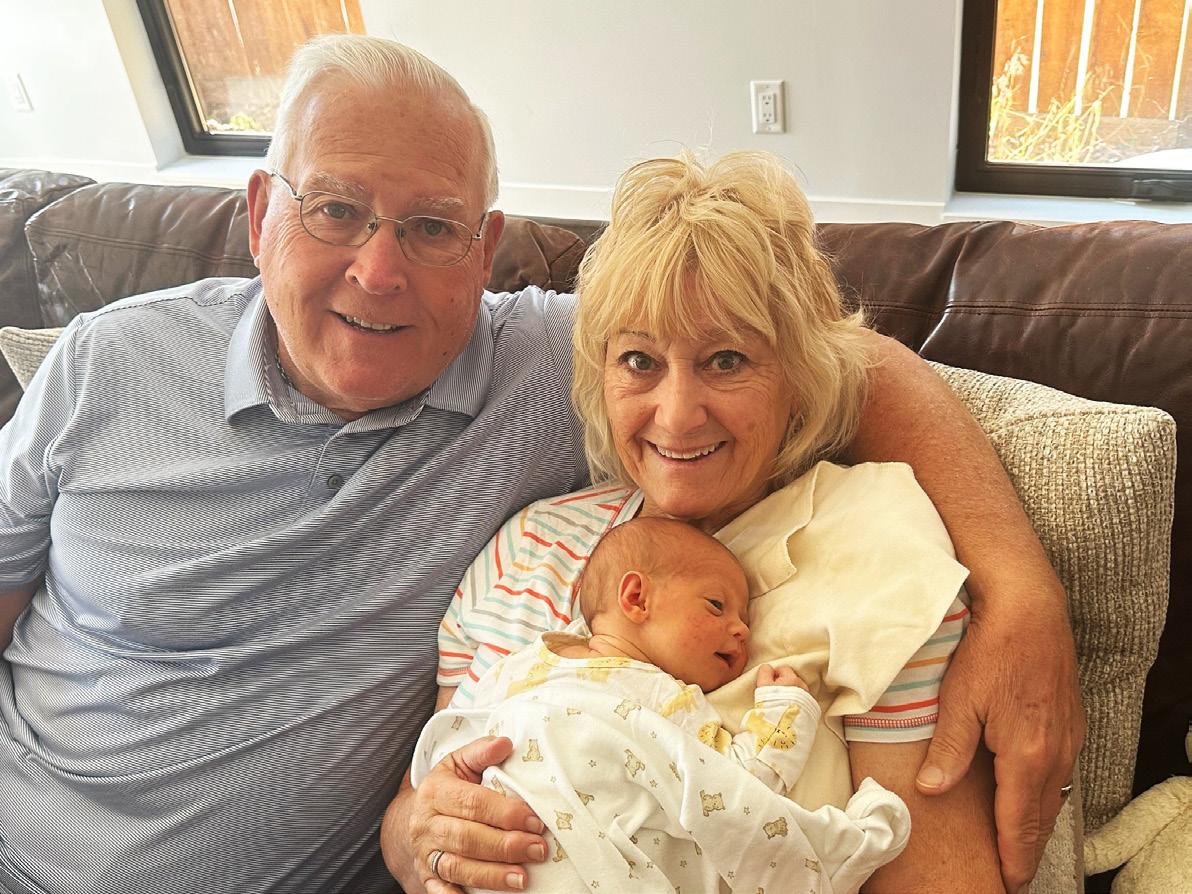

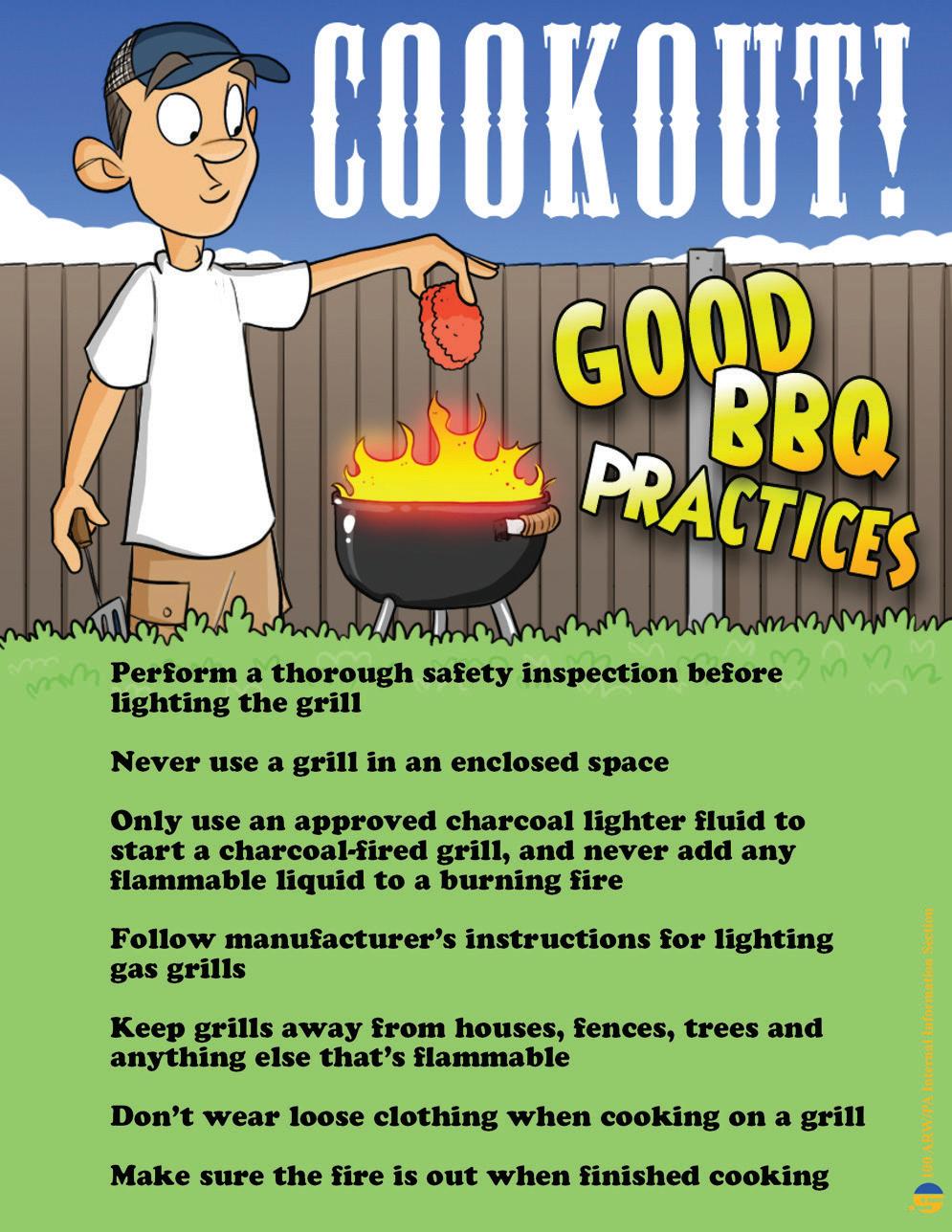
From Jane Breisch: My husband, Bob, and I visited England, France, Belgium, the Netherlands, and Denmark in early June. One of the highlights was being in Normandy, France on the 81st anniversary of D-Day, June 6. It was quite emotional seeing the reenactments and commemorations of the Allied landings on Utah and Omaha Beaches, two of the five beaches selected by the Allies for “Operation Overlord,” the Battle of Normandy.

The Caen Memorial Museum was sobering, as was visiting the American Cemetery which honors American troops who perished in Europe during WWII. 9,387 white marble gravestones overlook Omaha Beach.





Yes, is the answer, EXCEPT, when there is a posted sign stating, “No Turn on Red.” In that case, you are required to stop your vehicle before the crosswalk and wait for the light to turn green.
In the absence of such a sign, a turn on red is legal on an arrow or solid red light when
there is a safe gap in traffic. Proceed to turn right after stopping at the crosswalk and checking for pedestrians (both ways) in the crosswalk. For further information, visit the FDOT website at www.SafeMobilityFL.com .

You can turn right on red, except when you see a 'No Turn on Red' sign.
Stop your vehicle before the crosswalk.
for the light to turn green before turning right.
Turn right when there is a safe gap in traffic and there are no pedestrians in the crosswalk.


ANDREW WEINER WEINER@UKY.EDU
Continuing with ways to increase our selfawareness, I offer the Johari’s Window Model . As can be viewed below, the model is a quadrant with variables pertaining to self and others, as well as known and unknown. The combinations of these variables form windowpanes or a matrix.
The upper left-hand quadrant is defined by “What is known to self and What is known to others.” It is labelled as “My Public Self” or the “Open Pane” in a window. Quite simply, it consists of anything that you want to share with others. The quadrant below is the “hidden self” or “closed pane,” which includes things known to you that you choose for whatever reason not to share. The lower right-hand quadrant is labelled as “My Unconscious Self” or the “unknown pane.” For all intent and purposes this area does not exist existentially; it could be labelled as “yet to be discovered.” The upper righthand quadrant is labelled as “My Blind Spots,” which contain things others see in you but, you do not see in yourself. It is a potential danger zone.
My rule of thumb for this upper quadrant, is “you never want anyone seeing things in you that you are not already aware of yourself.” Good or bad, you want a small blind spot, meaning that your public self would become larger because you have greater self-awareness of what others see that you didn’t see before.

1) We may have received feedback from others but because we don’t like the feedback, our defense mechanisms (denial, defensiveness rationalization, etc.) stopped us from listening.
2) We don’t respect the giver of the feedback, so we don’t listen.
3) People may perceive you as overly aggressive or confrontational, and therefore, “walk on eggshells” around you, (assuming you would not listen anyway).
4) You project an image of not being interested or receptive to feedback (i.e., “know it all”), so why give it?
In conclusion, the only recommendation that I will make is to shrink your blind spot by becoming more self-aware about your weaknesses. This means that when someone criticizes you, you are already aware, and it’s not a shock, nor do you become defensive.
So, if someone calls a weakness to your attention, you can just say I am aware of that and then follow with two possible responses: “I am working on that,” or as Bill Parcells (former N.Y. Giants Football Coach) used to say “I am not for everyone.”




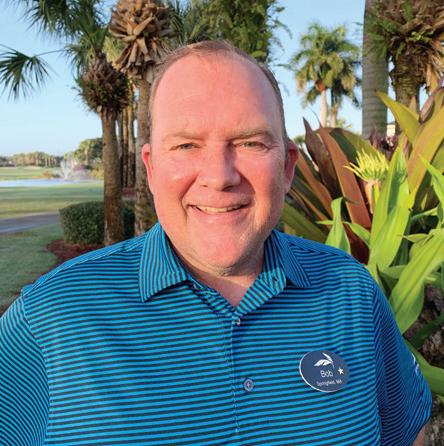
BOB KELLY, DIRECTOR OF GOLF BKELLY@HPGC.COM
Hello from the Golf Shop. Summer has been busy at the club with Reciprocal play from other clubs breaking all-time records. With a few local clubs going through renovations, and the great conditions of our courses, HP has become known as one of the top summer courses to play.
Golf course maintenance has been working hard on the off-season cultural practices. It’s always hard to watch them ripping up our beautiful turf, however these practices ensure us continued great course conditions. Summer course maintenance will be completed by the second week in October, and both courses will be open for play.
The 2025-26 season is right around the corner, and we’re excited for another great year of golf. Men’s & Ladies’ golf leagues will kick off in November, with all three leagues enjoying full six-month season schedules. I appreciate everyone who took part in our Shotgun start survey in June. With a few modifications, I think we have a good mix of shotguns and tee time weeks which will please most.
Look for an email from Golf Genius the first week in October with registration links to join the Men’s & Ladies’ golf leagues.
I have mentioned these dates a few times, but I think it’s worth repeating our schedule of major events for the 2025-2026 season:
• November 10 Ladies’ Member Guest
• December 7
• December 12-14
• February 1
• March 14-15
• March 27-28
• April 11-12
Christmas Scramble
Men’s Member Guest
Mixed Club Championship
Men’s & Ladies’ Member-Member
End of Season Tent Party Scramble
Men’s & Ladies’ Club Championship

For the first time in many years, we do have openings for bag storage. If you’re interested in storing your clubs, feel free to reach out to us now and we can get you a spot reserved.

As usual the summer is flying by, and a new golf season is right around the corner. We’re all excited for a great season ahead. See you soon!
DAVE KRAFT
DKRAFT_SR@YAHOO.COM
You are playing hole number 1 on the Sabal Golf Course. You hit your second stroke over the bunker on the right side of the fairway just short of the green. For your next stroke you would like to use your putter. The problem is that there is a pile of sand just off the green on the line you need to putt your ball. Are you allowed to remove this pile of sand just off of the putting green?
No. You must play the course as you find it.
Sand and Loose Soil are not loose impediments except on the putting green.
Definition of loose Impediment:
The Rules allow the player to do things on the putting green that are normally not allowed off the putting green, such as being allowed to mark, lift, clean and replace a ball, and to repair damage and remove sand and loose soil on the putting green.
Here is this month’s golf etiquette tip: It is disrespectable to everyone playing behind you to not rake the bunkers properly, and not repair pitch marks.
CLARK BRODEN CLARKBRODEN@GMAIL.COM
As many of you may know, I fell in my verandah in December, 2023 which resulted in a hospital stay and rehab, all of which lasted over six weeks. Several years before that, I had developed neuropathy in my lower legs and feet which affected my nerves, legs, and balance. I have trouble walking unaided, but thanks to physical therapy and the use of a walker, I get around quite well now.
I have played tennis since I was 15 and, at 82, I thought my tennis playing days were over unless I got into wheelchair tennis, which is always a possibility but involves more training. However, Carolyn Lawver, HP Tennis Pro, approached me in April, 2024

about playing tennis while sitting in a chair. I said why not? I started meeting with her once a week for 30 minutes. She would feed me balls on both forehand and backhands, telling me to keep my head down until after I hit the ball which I was not doing enough before I fell.
Voila! I was hitting balls better than ever! She did the same with me on drop shots, lobs, and volleys setting up targets! I was even serving from a chair very well! Eventually, I was able to stand up while holding my left hand on my walker and doing the same things hitting some great strokes, thanks to her wonderful teaching. We even have short rallies where last time we kept the ball going for 23 strokes. (There were two or three two-bounce rallies which is okay in wheelchair tennis.)
So, if you think there is no more tennis due to your leg strength and balance, think again. First, check with your doctor and physical therapist and see if you could be okay doing this.
I realize there is a chance I might even fall standing up, but I know my limitations and realize not to go after balls out of my reach. I have been hitting balls standing for a few months now with no problems. There is a risk, but I feel comfortable doing this. Otherwise, I would still stay in a chair and hit.

I was playing volleyball holding onto a bar with my physical therapist. I am doing the same thing standing and hitting a tennis ball. You could always start in a chair and see if you like it. Try it. It is a great workout! It’s important though, to check with your medical people first. Carolyn is a wonderful teacher no matter what your abilities! See you on the courts!
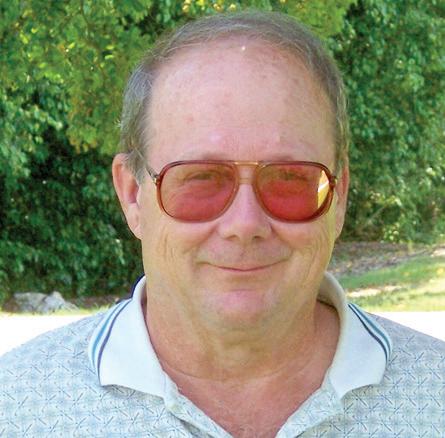









JANE BREISCH, EDITOR
Here are the Fort Myers regional theatre offerings for the coming season. Contact these venues now for the best seats and pricing.

Florida Repertory Theatre , 2268 Bay Street, Fort Myers. The FL Rep is celebrating their 28th season as “one of America’s top repertory theatres” according to the Wall Street Journal . Check their website at https://www.floridarep.org for tickets for the following shows:
• The Rat Pack Lounge
By James Hindman and Ray Roderick
October 3 - November 9, 2025; previews September 30 - October 2
ArtStage Studio Theatre
This fresh and funny musical revue celebrates the music of Frank Sinatra, Dean Martin, and Sammy Davis, Jr. In the magical story the famous “rat pack” trio, now in heaven, returns to earth for one special night to treat audiences to over 30 hit songs.
• Doubt, a Parable By John Patrick Shanley
October 31 - November 16, 2025; previews October 28 - 30
Historic Arcade Theatre
The fireworks begin as the exacting principal of a Bronx Catholic school— feared by students and colleagues alike— suspects improper relations between a charismatic priest and a student. She’s forced to wrestle with what’s fact, what’s fiction, and just how far she’ll go to expose what she sees as the truth.
The
By Mark Brown
December 5 - 21, 2025; previews December 2 - 4
Historic Arcade Theatre
This spirited twist on the classic holiday tale is set a year after Scrooge’s miraculous transformation. Now back to his old ways, Scrooge is suing Jacob Marley and the Ghosts of Christmas Past, Present, and Future for breaking-and-entering, kidnapping, slander, pain and suffering, attempted murder, and the intentional infliction of emotional distress.
• Advice By Brent Askari
December 12 - January 11, 2025; previews December 9 - 11
ArtStage Studio Theatre
A hilarious new comedy follows a married
couple, Joy and Ron, who on the eve of their wedding anniversary learn that their idiot friend Gary has written a self-help book … and it’s getting published! As they muse on the possible topic, Gary turns up, and invites them to try out some of his “couple exercises.”
• Always … Patsy Cline Created by Ted Swindley and based on a true story.
January 9 - 26, 2026; previews January 6 - 8
Historic Arcade Theatre
The heartfelt musical follows the powerful true story celebrating the most popular female country singer in recording history. Patsy Cline’s legendary voice and rise to stardom took America by storm, and this loving tribute is told through the eyes of her biggest fan and unlikely friend, Louise Seger.
• Tuesdays with Morrie By Jeffrey Hatcher & Mitch Albom
January 30 - March 1, 2026; previews
January 27 - 29
ArtStage Studio Theatre
The best-selling book comes to life in this moving autobiographical story following Mitch Albom’s visits to his old professor, Morrie Schwartz, as he battles Lou Gehrig’s Disease. What begins as a simple visit by the career-driven journalist turns into a weekly pilgrimage and a last class on the meaning of life.
By
Henry Lewis, Jonathan Sayer, & Henry Shields
February 13 - March 6, 2026; previews
February 10 - 12
Historic Arcade Theatre
This hilarious hybrid of Monty Python and Sherlock Holmes follows a fictitious theatre company’s opening night of The Murder at Haversham Manor where things quickly go from bad to utterly disastrous. Nevertheless, the accident-prone thespians battle against all odds to make it through to their final curtain call, with hysterical consequences!
• Little Shop of Horrors By Howard Ashman and Alan Menken
March 20 - April 12, 2026; previews March 17 -19
Historic Arcade Theatre
The musical is based on the 1960s
B-movie by Roger Corman and features book and lyrics by Howard Ashman and music by Alan Menken. The story is packed with laughs, thrills, chills, and Motown and doo-wop-inspired hit songs and follows down-on-his-luck Seymour who pines for his beautiful co-worker at Mushnik’s Skid Row Florist.
• Denise Fennell’s The Bride: Or, Does This Dress Make Me Look Married?
By Rick Pasqualone
April 10 - May 10, 2026; previews April 7 - 9
ArtStage Studio Theatre
Tour-de-force actress Denise Fennel, the scrappy Sister from last summer’s “ Late Nite Catechism ,” tackles the meaning of love, life, and the ritual of marriage. Drawing inspiration from her own life –and the advice of the audience – “The Bride” tackles the decision of a lifetime: Will she, or won’t she?

Players Circle Theater , 13211 McGregor Blvd, Fort Myers (only about 20 minutes from HP!).
Started by FL Repertory Theatre founders Bob Cacioppo and Carrie Lund, Players Circle is in its eighth season. Check their web site at https://www.playerscircle.org. for tickets for the following shows:
• Grease By Jim Jacobs and Warren Casey August 1 - 10, 2025
It’s high school in 1959. Time to enjoy –“Summer Nights,” “Greased Lightning,” & “We Go Together.” Starring our area’s most talented, duck-tailed, and bobby-soxed young adults.

• A special concert version of the American classical musical OKLAHOMA. 10 performances run from August 21-31.
• RUMORS, the hilarious Neil Simon farce.
October 24 - November 16; previews October 21 - 23
• Ho! Ho! Ho! The Christmas Show
Created by Robert Cacioppo
December 5 - 21, 2025; previews December 2 - 4
A favorite holiday tradition is back and better than ever! Come celebrate the most wonderful time of the year with this original musical revue brimming with love, laughter, and all your favorite holiday songs.
• Little Women Based on Louisa May Alcott’s Classic Novel
January 9 - February 1; previews January 6 - 8
A story that swept the nation is brought to life in this epic musical! Full of showstopping melodies and uplifting spirit. This timeless tale about the enduring power of family is guaranteed to capture your heart and astonish!
• Over the Tavern By Tom Dudzick
February 13 - March 8; previews February 10 - 12
A beguiling family comedy set in Buffalo in the Eisenhower 1950s. The Pazinski family has a lot going on in their cramped apartment over Dad’s bar. But all hell breaks loose, when 12-year-old, wisecracking Rudy questions being Catholic.
• 4,000 Miles By Amy Herzog
March 20 - April 5; previews March 17 - 19
A Pulitzer Prize Finalist! After a crosscountry bike trip, young Leo makes an unplanned visit to his feisty 91-year-old grand-mother Vera in her Greenwich Village apartment. Over the course of a single month these unlikely roommates, infuriate, bewilder, and ultimately reach each other in this charming dramedy.
By Giulia Melucci
April 17 - May 3; previews April 14 - 16
This tasty comedy invites you into Giulia’s kitchen as she recounts a string of botched romances and failed love affairs while preparing a home cooked meal.
COMPILED
FROM
HISTORY FACTS BY JANE BREISCH, EDITOR
The 1960’s were some of the most significant years in American history. The decade saw the Civil Rights Movement and a rising counterculture that altered the shape of the American social fabric. Pop music exploded like never before with the British Invasion led by the Beatles and Rolling Stones, but the ’60s were also an intense era of war and political violence.
The decade’s most significant historic events tended to be widely covered, and their sheer numbers almost created the impression that every moment was imbued with turbulence. But while the tumult of the decade played out on the evening news in homes across America, many people were still living normal everyday lives – albeit lives that looked quite different from our modern lifestyle. The following numbers offer a snapshot of day-to-day life in 1960s America.
Smoking was still widespread in the middle of the 20th century. The smoking rate in the U.S. reached a peak of 47% of adults (including 50% of doctors!) by the end of 1952. Though cigarette sales declined somewhat in 1953 and 1954 amid growing health concerns, the introduction of the filtered cigarette created a rebound. Through the early years of the 1960s, the smoking rate held
steady at 42% of adults. On January 11, 1964, Surgeon General Luther L. Terry published the first report of the Surgeon General’s Advisory Committee on Smoking and Health, a landmark event that brought the link between smoking and disease front and center in the American consciousness. Smoking has been on an overall downward trend ever since: As of 2021, smoking has declined to 11.5% of adults.
The Average Price of a Haircut Was $2.05
In 1966, the national average for the price of a men’s haircut was $1.95 ($19.03 in today’s currency). For women, it was $2.16 ($20.79 today) – unless an extravagant “permanent wave” was desired, which cost an average of $12.15 ($118.57 today). The permanent wave (or “perm”) was a multi-step process to make long-lasting curls, which required additional materials and could take between six to eight hours to complete, hence the premium cost.
At the beginning of the 1960s, marriage was still a fairly unquestioned rite of passage into adulthood. The median age for brides in 1960 was 20.1, while the median age for grooms was 24.2, and the percentage of adults who were married was a large majority: 72% in
1960. But the decade brought about sweeping social changes in attitudes toward divorce, sexuality, and parenthood, creating a downward trend in marriage that persisted into the 21st century. Data collected in 2023 shows that the current median age at first marriage is 28 for women and 30 for men, and 53% of American adults are married.
A single dollar bill had a lot of buying power throughout most of the 20th century. The national average price for most grocery staples in the ’60s was less than a buck: A 5-pound bag of flour was 61 cents; a dozen eggs cost 66 cents; a pound of ground beef was 55 cents; and a box of generic corn flakes was 32 cents. In today’s dollars, these prices equate to $5.95, $6.44, $5.37, and $3.12, respectively. With the notable exception of eggs (which have infamously inflated in cost since 2020), these equivalent prices are right in line with what we’d expect to see at a grocery store today.
Though many aspects of daily life are more expensive today than they were in the past, phone service is one item that’s actually more affordable today than it was

in the 1960s. During most of the landline era, phone calls to different regions incurred long-distance charges, based on the duration and distance of the call. In 1960, the cost for a three-minute call from New York to San Francisco was $2.25; it dropped to $1.75 by the end of 1967. With inflation, the $2 average for that three-minute call would be the equivalent of $19.89 today. A lengthier conversation could easily incur enough long-distance charges to surpass the cost of an entire month of cellphone service today.
For most of the 20th century, the typewriter was the quintessential office item. In 1946, leading manufacturer IBM set out to improve the typewriter design that had been standard since the late 19th century. IBM engineer Horace “Bud” Beattie developed a mushroom-shaped type element to replace the basket of individual typebars that manual typewriters were equipped with; it solved the problem of typebars

jamming if keys were pressed in too rapid succession. Beattie and a team of engineers refined the “mushroom printer” to a spherical shape about the size of a golf ball, which allowed for a pivoting motion that made the page more stable and less prone to small shifts that could result in unwanted slanted text.
In 1954, the team at IBM developed a prototype of the new design. The type sphere was designed to be easily replaceable, allowing for switching out typefaces, thus giving the machine its name: Selectric . The Selectric was capable of printing 186 words per minute and accommodating keystrokes as quick as 20 milliseconds apart with no risk of jamming. It included ergonomic keys, and was available in eight color combinations. It took seven years from the completion of the prototype for the product to go to market, but when the Selectric went on sale on July 31, 1961, the buzz around it was instant. First-year sales hit 80,000, topping projections by 400%. For the rest of the decade and beyond, it became the new standard in offices, comprising 75% of all typewriters sold, and eventually a 94% market share for electric typewriters.
COMPILED
FACTS BY JANE BREISCH,
Innovation doesn’t always follow a straight line. Some of history’s most famous inventions, including the microwave, were born from accidents. Others, though not strictly accidental, ended up serving a completely different purpose than originally intended – such as the blood pressure medication that ended up becoming a famous hair loss remedy.
These inventions, though all surprising in their own way, share some commonalities: ingenuity, adaptability, and a keen eye for potential. While their creators may not have set out to change the world in the ways they ultimately did, they recognized and seized the opportunities that lay before them. Here are five inventions whose original purposes were completely different.
Anyone who’s cleaned Play-Doh out of carpet or picked up all its little crumbs, knows how messy it can be, so it may come as a surprise that it was originally used as a cleaner. In the 1930s, Cincinnati-based soap manufacturer Kutol began making its own version of a doughy putty used to remove soot from wallpaper. This was a common need at
a time when homes were still primarily heated by coal furnaces, and after Kroger stores agreed to carry Kutol’s wall cleaner, the once-struggling company found new footing. But by the end of World War II, homes largely switched to gas and oil heating, and demand for the cleaner began to wane.
By the 1950s, the company had again fallen on tough times. But its fate turned once more after a Kutol executive’s sisterin-law, Kay Zufall – who also happened to be a nursery schoolteacher – suggested repurposing the dough as a children’s toy.
With a few tweaks to the formula and the introduction of bright red, blue, and yellow colors, the rebranded product was launched as Play-Doh. It was first sold to Cincinnati schools in single-gallon cans; three-packs of smaller jars were introduced for retail sale in 1956. It was a smash hit. By 1958, the company, which just four years prior was barely cracking $100,000 in annual sales, was raking in nearly $3 million yearly. In the mid-2010s, it was estimated that more than three billion cans of the stuff had been sold around the world since its debut as a toy.

Silly String may be a nostalgic party staple now, but it was originally a medical product. In the 1960s, chemist Robert P. Cox and inventor Leonard A. Fish set out to create an instant spray-on cast for broken bones. During their experiments, which included testing upward of 500 different spraying vessels, they discovered the material could be sprayed in long, sticky strands from a certain pressurized can.
The pair saw the potential in their silly substance and brought it to California toy company Wham-O, home to such popular toys as the Frisbee and the Slip ’N Slide. The meeting didn’t exactly go as planned. Cox and Fish excitedly demonstrated the spray to – and on – the Wham-O employee, and they were subsequently asked to leave.
The following day, however, the eager inventors were asked to send 24 cans to Wham-O for a second look. Despite being reformulated over the years to comply with changing regulations – notably the 1978 U.S. ban on Freon as a propellant –
Silly String has remained a staple on store shelves ever since. According to Cox’s 2008 obituary, he couldn’t help but feel a bit frustrated that, of all his endeavors, it was his silliest invention that ultimately took off.
Listerine’s minty burn wasn’t always meant to freshen breath. When the product was created in 1879 by surgeon Joseph Lawrence in St. Louis, Missouri, it was intended as a surgical antiseptic. Its name was even an homage to British surgeon Joseph Lister, who pioneered sterile surgery in the 1860s.

In the 1880s, Lawrence was working with pharmacist Jordan Wheat Lambert to sell the product. Doctors sang its praises, claiming it effective against everything from ulcers to gonorrhea. By the 1890s, Listerine was officially being marketed for uses beyond the doctor’s office, primarily to dentists as a “perfect tooth and mouth wash,” as advertisements of the time touted.
Throughout the ensuing years, Listerine’s uses varied. At different times it was marketed as a floor cleaner, a cure for dandruff, and even an elixir for sore throats, coughs, and colds – it was only in 1975 that the U.S. Federal Trade Commission ordered the company to stop falsely claiming that health purpose.
Its most lucrative market, however, was established in the 1920s, when the Warner-Lambert pharmaceutical company began advertising Listerine to treat “halitosis,” a/k/a bad breath. Listerine’s ads painted this fairly minor affliction as a troublesome medical condition for which they had the cure. The campaign was so successful that not only did Listerine emerge and remain best known as a mouthwash, but the phrase “halitosis appeal” became standard marketing speak to refer to the use of fear to sell a product.
We know treadmills as a modern fitness staple that, depending on who you ask, are more pain than pleasure. This is somewhat fitting, given the exercise tool’s punishing origins. In the early 19th century, British engineer William Cubitt designed the first treadmill as a form of prison labor. Inmates, often in groups, were forced to walk on large rotating wheels for upward of eight hours a day. The wheel power was typically used to grind grain or pump water, supposedly making it a productive means of punishment designed to rehabilitate prisoners.
By the early 20th century, treadmills had been abandoned in prisons. But as heart disease started to skyrocket in the U.S., doctors began rethinking the machine, first as a testing tool for cardiovascular performance.
American doctor of medicine Kenneth Cooper used treadmills in the 1960s to test endurance in pilots, and in 1968, his book Aerobics promoted running as a way to prevent heart disease. The work inspired New Jersey engineer William Staub, who built his own treadmill – a simple, compact motorized machine – and in the 1970s, his PaceMaster treadmill brought indoor running to the masses.
Rogaine has long been a popular hair loss treatment, but that use was discovered as a happy side effect of another drug. Its evolution began in the 1950s, when chemists at the Upjohn pharmaceutical company – also responsible for developing Xanax and Motrin before being acquired by Pfizer – developed a drug called minoxidil to treat ulcers, which was later found to lower blood pressure. In the 1970s, the FDA approved minoxidil as an oral blood pressure medication, and patients who took the drug began noticing increased hair growth as well.
As the unexpected side effect became more widely known, Upjohn acted before competitors could, refining minoxidil into a topical solution. In 1988, the FDA approved the newly named Rogaine as a prescription first for men and eventually for women (three years later). In 1996, Rogaine became available over the counter.
When it was initially released, there was some skepticism about whether the product could live up to the hype – it wasn’t a miracle cure for hair loss, after all. Upjohn focused on marketing directly to consumers instead of doctors, namely with aggressive television and magazine campaigns. As a result, sales grew from around $67 million in 1989 to $140 million in 1990. As of 2020, an estimated 2.87 million Americans counted themselves as Rogaine customers.
SOURCE: THE UNITED NATIONS
The world’s population is more than three times larger than it was in the midtwentieth century. On November 15, 2022, the world’s population reached 8 billion people, up from an estimated 2.5 billion people in 1950, adding 1 billion people since 2010, and 2 billion since 1998.
This dramatic growth has been driven largely by increasing numbers of people surviving to reproductive age, the gradual increase in human lifespan, increasing urbanization, and accelerating migration. Major changes in fertility rate have accompanied this growth. These trends will have far-reaching implications for generations to come.
While it took the global population 12 years to grow from 7 to 8 billion, it will take approximately 15 years—until 2037—for it to reach 9 billion, a sign that the overall growth rate of the global population is slowing. Yet levels of fertility remain high in some countries. Countries with the highest fertility levels tend to be those with the lowest income per capita. Global population growth has therefore over time become increasingly concentrated among the world’s poorest countries, most of which are in subSaharan Africa.
China (1.4 billion) and India (1.4 billion) remain the two most populous countries of the world, each representing nearly 18% of the world’s population. However, in April 2023, India’s population surpassed the population of mainland China. India’s population is expected to keep growing for several decades. Meanwhile, China’s population recently reached its maximum size and has shown a decline since 2022. According to projections, the number of people in China will continue to decrease and may fall below 1 billion before the end of the century.
The world population is projected to reach 9.7 billion in 2050, and 10.4 billion by 2100. As with any type of projection, there is a degree of uncertainty surrounding these latest population projections. Survival prospects are also projected to improve in all countries.
From 2.5 billion to 8 billion in just 70 years—our population boom is reshaping the planet, with Africa leading future growth and parts of Europe shrinking fast.
More than half of global population growth between now and 2050 is expected to occur in Africa. The population of sub-Saharan Africa is projected to double by 2050. A rapid population increase in Africa is anticipated even if there is a substantial reduction of fertility levels in the near future. Regardless of the uncertainty surrounding future trends in fertility in Africa, the large number of young people currently on the continent, who will reach adulthood in the coming years and have children of their own, ensures that the region will play a central role in shaping the size and distribution of the world’s population over the coming decades.
In sharp contrast, the populations of 61 countries, largely in Europe, are expected to decrease by 2050, of which 26 may see a reduction of at least 10%. Several countries are expected to see their populations decline by more than 15% by 2050, including Bosnia and Herzegovina, Bulgaria, Croatia, Hungary, Japan, Latvia, Lithuania, Republic of Moldova, Romania, Serbia, and Ukraine. Fertility

in all European countries is now below the level required for full replacement of the population in the long run (around 2.1 children per woman). 74% of the earth’s population reside in countries where fertility is around or below this replacement level.
International migration is a much smaller component of population change than births or deaths. However, in some countries the impact of migration on population size is significant, namely in countries that send or receive large numbers of economic migrants and those affected by refugee flows. Between 2010 and 2021, seventeen countries saw a net inflow of more than one million migrants, while ten countries will see a net outflow of similar magnitude.

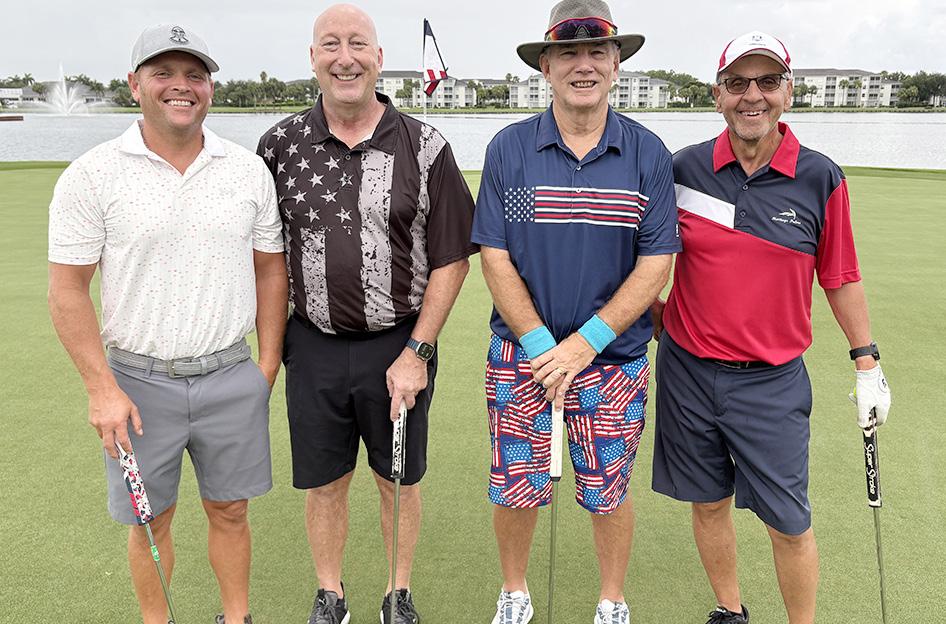
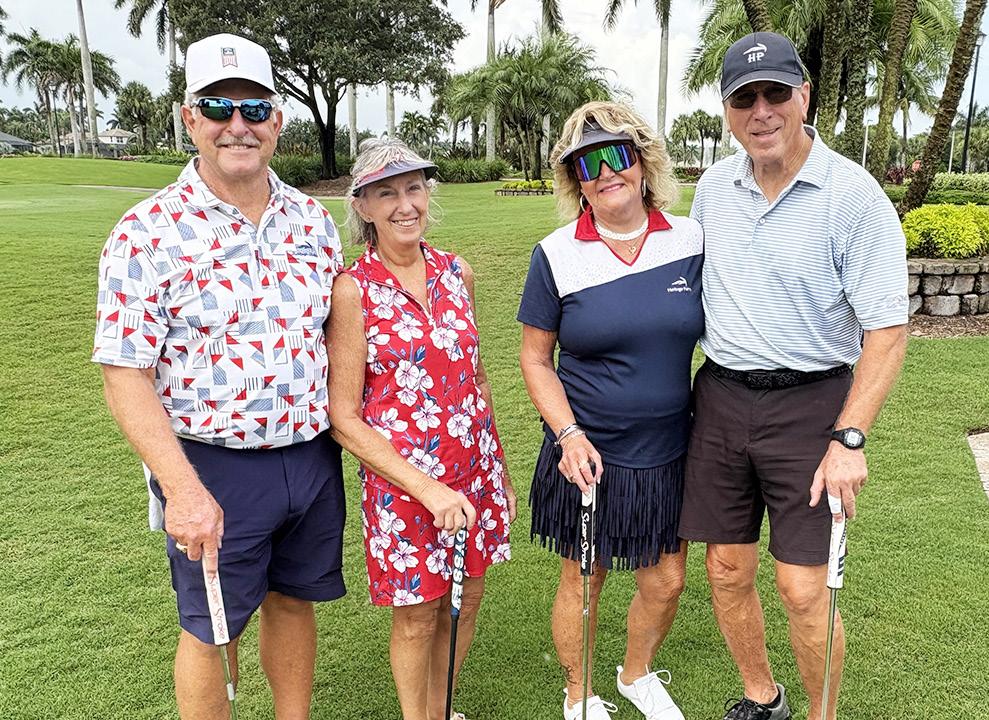




L-R: KEITH & ROSE BAUER, PEGGI ERICKSON, AND JOHN RESIDORI.

L-R: KYONG BACON, LYLA OTT, DARLENE SLOWIK, AND BARB DIGANGI.


L-R: BOB REDAR, P.C. SHETTY, MATT OLINYK, AND JOHN SHAUGHNESSY.

L-R: GARY & ANNIE KAJANDER, AND SHARON & JOE PATALINO.







CLICK HERE TO RETURN TO FOURTH OF JULY SCRAMBLIN’ FUN